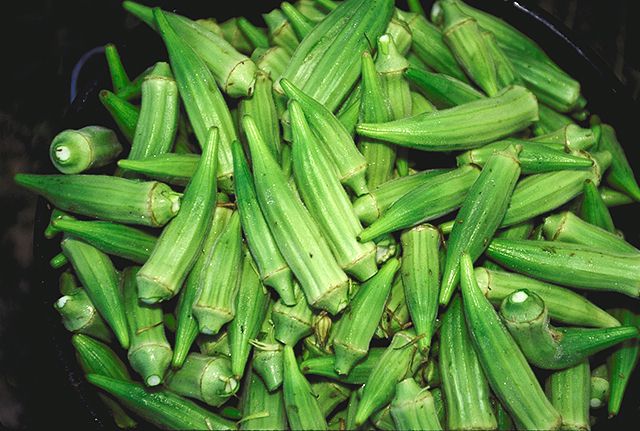-
 Eddington limit
Eddington limit
-
 SKMP
SKMP
-
 Google AdWords
Google AdWords
-
 Bit rate
Bit rate
-
 Corpuscle
Corpuscle
-
 Feldspars
Feldspars
-
 Grey matter
Grey matter
-
 Flavour
Flavour
-
 Diuretic
Diuretic
-
 SESAME
SESAME
-
 Xylophagy
Xylophagy
-
 Layout planning
Layout planning
-
 Anadromous
Anadromous
-
 Beak
Beak
-
 Premammalian
Premammalian
-
 Nodular
Nodular
-
 Proto-oncogene
Proto-oncogene
-
 Magnetopause
Magnetopause
-
 Mastectomy
Mastectomy
-
 Sumoylation (SUMOylation)
Sumoylation (SUMOylation)
-
 Pneumatolytic
Pneumatolytic
-
 cDNA
cDNA
-
 Thymidine
Thymidine
-
 S0/T0
S0/T0
-
 Analgesic
Analgesic
-
 Electroencephalograph
Electroencephalograph
-
 Iron
Iron
-
 CD-RW
CD-RW
-
 Percutaneous
Percutaneous
-
 Incretin modulators
Incretin modulators
Okra
Okra season
Okra can be found year-round, for some okra varieties are grown during the rainy season and other okra varieties are grown during the dry season.
Nutritional value of okra
Low in calories (31 kilocalories per 100 grammes), this fruit is an excellent source of potassium, calcium and phosphorous, folic acid, magnesium and vitamins A, B6 and C. It also contains antioxidants and fibre.
Okra varieties
Okra is a plant that can grow to a height of 2.5 metres. There are, however, dwarf varieties that do not grow higher than 0.9 metre. The fruit also varies depending on the variety, measuring between 4 and 15 centimetres long.
Okra facts
Okra is of African origin, eaten as a vegetable or as a condiment. Its transversal section is in the shape of a perfect pentagon, in the center of which are its seeds.
Sold at an early stage, it withers quickly and keeps for 2 to 3 days in the vegetable crisper (protected by absorbent paper). It can be frozen whole, after being blanched for 2 minutes.
It can be eaten raw or cooked.
 Okra is a fruit of African origin. © DR
Okra is a fruit of African origin. © DR
Latest
Fill out my online form.



